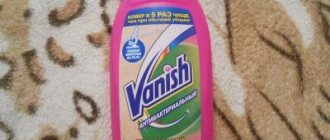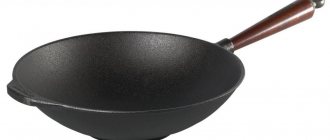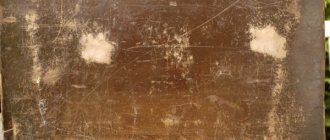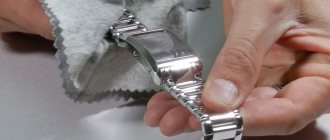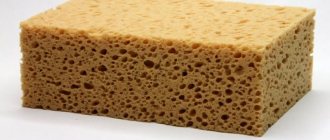Hello, dear readers of the blog Pc-information-guide.ru. Maybe my question will cause you confusion now, but when was the last time you looked into the system unit of your computer? Can't remember? Then your computer most likely has accumulated enough dust that needs to be removed periodically.
Where does it even come from? Yes, all from the same place where it appears and throughout the entire apartment. But, since cooling the computer system unit is similar in principle to the operation of a vacuum cleaner, this only aggravates the situation with dust, which only increases over time. And the more powerful the cooling system, the more fans installed in the system unit, the greater the air flow passing through the system unit, and the faster dust will accumulate in it.
What happens if you don’t clean your computer from dust for a long time? If you're lucky, nothing will happen, but the risk of electrical breakdown of components always increases; a layer of dust can somehow close the contacts, which should always be open. Even if you are lucky and nothing like this happens, think about how disgusting it is to constantly breathe the dust that the system unit will blow out during operation; at the very least, it is not safe for health.
In addition, a dusty computer does not work at all like a normal one; the components inside it begin to heat up above normal, as dust gets clogged in the radiators and cooling fans, which can ultimately lead to their failure. Plus, overheating itself leads to improper operation of the components, the computer begins to “slow down”, so cleaning the computer from dust is a very important thing, which is best done regularly, at least once every six months. I think I managed to convince you of the importance and usefulness of this procedure.
So, today I will talk about how to clean your computer from dust at home . You don't need any special skills, just a little patience and sleight of hand. Equipment you will need: a small brush for painting, a vacuum cleaner, a can of compressed air (optional), a rubber bulb from the pharmacy (as a replacement for the can) . But before starting the process, it is naturally necessary to open the system unit, having first disconnected it from power. In order to get inside the system unit, as a rule, its left side cover is removed to gain access to the components.
Is everything done? If not, there are two screws on the back that need to be removed to remove the side cover. Okay, there are only two ways to clean your computer from dust , the first of them allows you to limit yourself to just a brush and a vacuum cleaner, for the second you will need to use a can of compressed air (or its equivalent) and a vacuum cleaner. The first method will be somewhat simpler, I suggest starting with it.
Where is it used?
Many computer users know that the system unit needs to be cleaned from time to time. This is vital for all its parts and directly affects the operation of the device. Dust, fibers, fluff and other particles, one way or another, get clogged into the case and interfere with normal cooling. And, contrary to the belief that vacuuming the inside of the system unit is enough, there are hard-to-reach places where you can’t reach with a vacuum cleaner tube, and you shouldn’t do this - for example, it’s not recommended to touch the boards with anything.
What can be cleaned with compressed air:
- radiators;
- coolers;
- Power supplies;
- keyboard;
- any other hard-to-reach places;
- other computer equipment.
What is a program for cleaning a fan on a laptop and is it effective?
The same cleaning process can be implemented using the program. In fact, such software does not do anything supernatural. It simply accelerates the cooler to maximum speed, causing the dirt to fly off on its own. However, this method rarely helps to cope with all problems and will not remove a huge hardened layer of dust from the cooler.
Is there a fan cleaning function in windows 10
If you don’t like third-party programs, you can use the built-in ones. For all modern laptops that come with an operating system, a special driver is preinstalled for it.
Cleaning procedure
How to properly use a compressed air cylinder:
- Disconnect equipment from the network.
- Wait until all parts have cooled down.
- Wear a protective mask and goggles (not required, but recommended, especially for those with allergies).
- Place a thin long tube onto the can.
- Do not shake!
- Spray gas only onto the surface to be cleaned, using short presses.
- Always hold the can vertically, with the spray tip facing up. Do not turn.
- Do not direct on mucous membranes.
Instructions:
- Open the case of the system unit, vacuum and wipe it and its components to remove clots and large lumps of dust.
- There is no need to open the laptop - it is blown through the holes in the case so that the compressed air comes out through the ones closest to them.
- Blow coolers, power supply, boards, and other hard-to-reach places with compressed air, never touching the surface with the spray tube of the can.
Compressed air is also very useful for blowing through the keyboard. After all, it is very difficult to clean it in other ways. The only thing is that you should be very careful with the laptop keys, as you can drive all the garbage inside the device itself and clog it even more.
We recommend: Does a bath help with coronavirus, what happens to the virus in a steam room?
How to clean your computer from dust
Prepare everything you need
You will need:
- Soft brush or toothbrush;
- screwdriver;
- compressed air cylinder or rubber bulb;
- wet wipes.
Unplug cables
Shut down your computer completely. Disconnect it from the mains or UPS. Disconnect cables from your monitor, keyboard, speakers, and all other accessories. Remove flash drives, external hard drives and other equipment.
Remove the walls of the case
Shot: Techistan/YouTube
It is advisable to perform further actions outside or on the balcony so as not to breathe dust. Lay something on the table and place the system unit on top. Using a screwdriver, unscrew the pair of screws from the rear panel that hold the side wall in place and remove it by sliding it back.
Also remove the front panel by gently pulling it towards you. If you have dust filters, clean them with a brush, blow them or rinse them under running water and dry them completely. If there are no such details, proceed to the next step.
Take care of the video card heatsink
Frame: Techistan/YouTube
For minor stains, the graphics adapter can be cleaned directly on the motherboard, but for convenience it is better to remove it. To do this, use a screwdriver to unscrew one or two screws on the video card from the rear panel, press the plastic latch near the slot and carefully pull out the adapter. If it has additional power, first disconnect the cables.
Take a photo to use as a guide during assembly later.
Clean the fan and heatsink of the graphics accelerator by brushing off dust with a brush and blowing air from a can, a rubber bulb, or, at worst, from your mouth. For convenience, you can remove the plastic cover of the video card.
Clean CPU Cooler
Frame: Techistan/YouTube
The processor fan and heatsink can also be put in order without removing it, but it’s better to take the trouble and replace the thermal paste at the same time (especially if this hasn’t been done for a long time). Disconnect the cooler's power by removing the connector on the motherboard. Then unscrew the fastening screws or snap off the clamps, depending on the design. Look for detailed information in the instruction manual for the board or cooler (if you replaced it).
Clean off the dust with a brush and blow everything thoroughly with air, holding the fan blades with your hand to avoid damage from rotation at high speeds. If necessary, wipe the impeller with wet wipes, wrung them out first.
Go to the power supply fan
Shot: DIY / YouTube
The power supply has its own closed housing, which collects a lot of dust. You can get rid of it with the same brush and compressed air. Although complete cleaning is only possible during disassembly.
If you're confident in your abilities, disconnect the power supply cables from the motherboard, remove the four screws from the back cover that hold the part in place, and pull it out. Unscrew the fasteners on the body of the power supply itself and, using a screwdriver, pry up the cover and remove it. Carefully remove all dust inside and on the fan. While blowing air through it, do not forget to hold the impeller.
Clean case coolers
Frame: Bantu Tech Insight / YouTube
The fans on the front and rear walls can be cleaned on site, or can be removed by unscrewing the four mounting screws. The procedure is the same: remove dust with a brush and blow with air. Or wipe the blades with wrung out damp cloths.
Clean up inside the system unit
All that remains is to clean the hard drives, drives and RAM sticks from dust, and also wipe the bottom wall of the unit with napkins.
Reinstall the components
After cleaning, return to their place all the components that were removed during the process. Check the mounting screws, cable connections and the reliability of their connectors.
If you removed the fans, do not confuse the direction of flow: the cooler on the front wall should pump air in, and the cooler on the back should blow it out. The arrows on the details will help you navigate.
Secure the cover
Install the front and side covers of the system unit and secure them. Connect the network and all other cables, turn on the computer and check its operation. If everything is done correctly, the fan noise will become significantly less, and the temperature of the processor, video card and other components will decrease.
How to choose
The resource mschistota.ru recommends using special compressed air cylinders to blow through complex equipment. You should not buy other variations for these purposes, as they may contain additional substances that will harm the components.
Another fundamentally important point when choosing is that the gas inside the cylinder must be non-flammable. Flammable sprays, which contain, for example, propane, are strictly incompatible with complex equipment, circuit boards and other electronics.
As for the price, on average you will have to spend from 200 to 1000 rubles on compressed gas cans (although you can find more expensive ones), and the cost is determined by the complexity of production. But if you use the can regularly and follow the recommendations, then one will be enough for about 10 cleanings.
We are, of course, not talking about very “heavy” contamination of the system unit and its internals, which could easily take half a bottle. In general, having a can of compressed air on hand is useful for many people. Even for those who are not interested in computer technology and prefer not to get involved in it again.
Do I need to clean fans and coolers in laptops and computers?
The component, called Cooler in the English-speaking part of the Internet, is an extremely important part of the entire system. It performs one of the main roles in the system unit: it constantly cools the processor and video card, saving them from overheating. Therefore, when the fan itself becomes dirty, starts to spin slowly or stops completely, the other components begin to get very hot.
Therefore, we recommend a thorough cleaning every few months. Otherwise, get ready to buy new parts and change the “stuffing” of your PC every couple of years.
What is a cooler?
In English, the word “cooler” is literally translated as “cooler”. In fact, this is a regular fan that circulates air inside the system unit or laptop. Thanks to this component, heat is effectively removed from heated surfaces.
One day I unwittingly became a participant in the following experiment. While cleaning the laptop, I had to disassemble it down to the smallest detail. In the end, I assembled everything, but forgot to connect the cooler. A few seconds after turning on the PC, the thermal protection system was triggered, and the computer immediately turned off. I later found out that there is such a useful function that protects the hardware from overheating. By the way, not all models are equipped with such capabilities. And if the fan fails (or you forget to connect it), the consequences can be disastrous.
Removing dust from a laptop
The laptop cleaning service is one of the most popular and cheapest in the service center. But you can do it yourself.
How to clean the cooler on a laptop? This is not difficult, but when you do this for the first time, you need to prepare special tools. For cleaning you will need:
- Thermal paste. Using the Internet, you can not only buy it, but also find out from different people which pasta is better;
- In order to clean the laptop, you must first disassemble it. You will need a Phillips and straight screwdriver to remove the bolts and disconnect the contacts. For reliability, screwdrivers should have magnetized tips so that the bolt does not get stuck somewhere in the laptop;
- You will also need pliers to disconnect parts;
- Prepare alcohol cleaning products and cotton wool (preferably cotton swabs);
- Find some flat piece of plastic to apply thermal paste to;
- Also find a card, like a credit card, to open the case;
- In some cases, fan lubricant may be required. Any technical grade will do here, but it should not be very liquid and not very thick;
- Thermal pads may also be required. But they are already needed for those laptops that are more than 5 years old.
The care of laptops and computers is described more widely in a special article.
Do-it-yourself comprehensive laptop cleaning
If simple methods do not help or the equipment has not been cleaned for several years, a comprehensive cleaning will be required with disassembly of the entire case.
Removing the back cover
The first step is to open the laptop to get to the contaminated parts. To do this, unscrew the bolts holding the panel at the back using a Phillips screwdriver of the required diameter. Twist them counterclockwise. On some models, only the portion of the panel above the vent is removed, rather than the entire cover. Collect the unscrewed bolts in a container so as not to lose them. If the cover does not budge, do not force it, but double-check that all the bolts have been removed. After removing the cover, wipe it outside and inside.
Radiator and cooler
- First of all, find the cooler and radiator. The cooler looks like a fan in a square or round frame, and the radiator is a box with a grille. They can be blown out with a vacuum cleaner or a spray can, and dust from the microcircuits should also be blown out. But you need to use the vacuum cleaner very carefully so as not to damage fragile parts. The handset must not be brought close to or touch the circuits.
- Unscrew the screws that hold the fan in place and put it somewhere else. Remove the fan, disconnect the cable leading to the microcircuit. Wipe the blades with a brush and blow air through the area where the cooler was located.
- For prevention, lubricate the engine with machine oil by dropping a drop inside. Return the device to its place, attach the cable and tighten the bolts.
- Thoroughly clean the radiator with a thin brush to remove old thermal paste and dust accumulations.
Video card and motherboard
- The motherboard is the most fragile part of a laptop, so you need to remove it very carefully. Walk over the surface with a soft brush slightly moistened with alcohol and blow off the microcircuits and contacts.
- Remove the processor from the slot as carefully as possible. Pull the socket pedal (the connector where the processor is inserted) slightly to the side and lift it up. The pedal should be vertical, then grab the processor by the sides and remove it from the connector. Go over the contacts with a cotton swab dipped in alcohol.
Replacing thermal paste
Cleaning the ventilation system involves changing the thermal paste. Remove any leftovers. If it's dry, rub it with an alcohol wipe. Be careful, there should be no scratches. Apply the paste a little at a time, spreading it with your finger or spatula (included) over the radiator plate.
Cleaning the keyboard
The keyboard is perhaps the dirtiest place on the computer. If it is not very dirty, wipe it from the outside with special napkins for equipment or a cloth soaked in a soapy solution. Wring out the cloth, soap the buttons, rub to remove dirt and soap, and wipe dry. It is important not to damage the markings or flood the keys.
Cleaning the connectors
Internet or USB ports can also become dirty. This periodically causes problems with connecting flash drives, phones and mice. Take a brush with long bristles. If the hole is narrow, then simply cut a strip of plastic along the width of the slot and cover it with double-sided tape. Dip the Velcro in alcohol and let it dry thoroughly. Lightly wipe the ports and blow them with compressed air.
Screen care
The monitor should not be rubbed with compounds that contain alcohol, as moisture may damage the screen. Buy alcohol-free wipes for LCD screens or a spray solution. Rub so that there are no streaks left. It is better to do a complete cleaning once a year.
Cleaning peripherals
The keyboard and mouse are the devices that the user touches most of the time, and the degree of contamination depends on their performance. These devices are real breeding grounds for bacteria without proper care.
Keyboard and Mouse
Before using cleaning products for your computer or keyboard, remove any stuck particles under the buttons, turn it over and gently tap the back of the keyboard with your palm, after laying it on an old newspaper. Use a brush if necessary.
We suggest you familiarize yourself with Cleaning fur at home: restoring the purity and shine of a product made from natural fur
1. Using a cloth with a small amount of plastic cleaner or a damp wipe, clean all flat surfaces of the keyboard.
2. The buttons on the sides may still be dirty. There are several ways to clean them, one of them is special keyboard cleaning sticks.
Special keyboard cleaning sticks
Cleaning keyboard buttons with special sticks
4. Mice have mostly dirty sliders (especially when you work without a mouse pad), so for your own comfort, remove these deposits regularly. It's easy to do even with your fingernail.
Cleaning a computer mouse
5. Using a damp cloth, wipe the handle top and bottom. It's best not to use foam on plastics because it gets into crevices where it's difficult to remove.
Cleaning your PC monitor screen
1. If possible, use products that have antistatic properties.
Cleaning agent with antistatic properties
2. Put a little foam on the cloth and wipe the entire computer monitor cover (except the screen), printers, etc.
3. To clean LCD screens, use another product designed specifically for this purpose.
Cleaning agent for cleaning LCD screens
4. Apply a small amount of LCD screen cleaner to a soft cloth. Wipe starting from the center, thoroughly cleaning along the edges. Once the screen is dry, you can turn on the computer.
Cleaning your PC monitor screen
Using a brush and vacuum cleaner
Ideally, of course, it wouldn’t hurt to remove all the components, that is, disconnect them from the motherboard and clean each of them separately. But this will require a lot of your time, although in most cases it is enough to simply put the system unit on its side and clean it without removing or disconnecting anything.
It is best to use a brush with synthetic bristles for this procedure; static electricity will not accumulate on it, unlike a brush with natural bristles. I also recommend insulating the metal part of the brush, this one at the base, in order to avoid... well, I think you guessed what. The fact is that even after de-energizing the computer, residual voltage sometimes remains on its elements, and this must be taken into account, there are no trifles here.
Usually most of the dust accumulates at the very bottom, where it is not difficult to reach. Using gentle movements, we sweep away all the dust from hard-to-reach places in the system unit, mainly these are places for attaching cages with hard drives, the motherboard tray, and in general places near all coolers, and at the same time you need to keep a vacuum cleaner hose nearby so that the “disturbed” dust is immediately went into the vacuum cleaner, and did not scatter around the room and so that you did not breathe it.
Pay special attention to all kinds of coolers and radiators installed on components (video card, motherboard, processor). If you can’t sweep it out with a brush, try taking a thin screwdriver and use it to scrape off the pressed dust from the radiator elements and cooler blades, just be careful not to accidentally bend anything there. I suggest watching a video that talks about this in more detail:
In general, if there is a little less dust in your system unit than in the video, then you don’t have to waste time removing components. I don’t see the point in polishing the insides of the computer, because in a month or two all your efforts will “come to naught.” Well, okay, now I propose to move on to considering the second method of cleaning your computer from dust.
